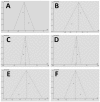Can Genetic Factors Compromise the Success of Dental Implants? A Systematic Review and Meta-Analysis
- PMID: 30200629
- PMCID: PMC6162655
- DOI: 10.3390/genes9090444
Can Genetic Factors Compromise the Success of Dental Implants? A Systematic Review and Meta-Analysis
Abstract
Dental implants provide a predictable treatment option for partial and complete edentulism via the placement of a fixed permanent artificial root to support prosthetic dental crowns. Despite the high survival rates, long-term dental implant failures are still reported, leading to implant removals and additional financial and health burdens. While extrinsic factors that improve the success rate of implants have been well explored, the impact of genetic factors on this matter is poorly understood. A systematic review and meta-analysis study was conducted to determine whether genetic factors contribute to an increased risk of dental implant failures. A comprehensive search for peer-reviewed articles on dental implants and genetic factors was performed using various literature database libraries. The study design was conducted according to Preferred Reporting Items for Systematic Reviews and Meta-Analysis (PRISMA) guidelines, and the obtained records were registered in the International Prospective Register of Systematic Reviews (PROSPERO) database. According to the exclusion/inclusion criteria, 13 studies were eligible for this study out of 809 articles. The meta-analysis of the combined association studies of DNA variations and dental implants did not indicate an increased risk for implant failure due to DNA variations in IL-1B, IL-10 and TNF-α. This study emphasizes the need for larger randomized controlled clinical trials to inform clinicians and patients about the role of genetic factors on dental implant survival and the success rate in healthy and compromised patients.
Keywords: bone quality; bone regeneration; dental implants; genetic factors; survival rate.
Conflict of interest statement
The authors declare no conflict of interest.
Figures








Similar articles
-
Survival and complication rates of tooth-implant versus freestanding implant supporting fixed partial prosthesis: a systematic review and meta-analysis.J Prosthodont Res. 2021 Feb 24;65(1):1-10. doi: 10.2186/jpr.JPOR_2019_494. Epub 2020 Sep 9. J Prosthodont Res. 2021. PMID: 32938874
-
Should the restoration of adjacent implants be splinted or nonsplinted? A systematic review and meta-analysis.J Prosthet Dent. 2019 Jan;121(1):41-51. doi: 10.1016/j.prosdent.2018.03.004. Epub 2018 Jun 29. J Prosthet Dent. 2019. PMID: 29961632
-
Risk of bias assessment of systematic reviews regarding dental implant placement in smokers: An umbrella systematic review.J Prosthet Dent. 2018 Aug;120(2):198-203. doi: 10.1016/j.prosdent.2017.12.026. Epub 2018 Apr 30. J Prosthet Dent. 2018. PMID: 29724548
-
Quality assessment of systematic reviews regarding dental implant placement on diabetic patients: an overview of systematic reviews.Med Oral Patol Oral Cir Bucal. 2019 Jul 1;24(4):e483-e490. doi: 10.4317/medoral.22955. Med Oral Patol Oral Cir Bucal. 2019. PMID: 31232387 Free PMC article.
-
Implant prosthetic rehabilitation in partially edentulous patients with bone atrophy. An umbrella review based on systematic reviews of randomised controlled trials.Eur J Oral Implantol. 2018;11(3):261-280. Eur J Oral Implantol. 2018. PMID: 30246181
Cited by
-
Association of IL-10 and TNF-α Polymorphisms with Dental Peri-Implant Disease Risk: A Meta-Analysis, Meta-Regression, and Trial Sequential Analysis.Int J Environ Res Public Health. 2021 Jul 20;18(14):7697. doi: 10.3390/ijerph18147697. Int J Environ Res Public Health. 2021. PMID: 34300145 Free PMC article. Review.
-
The relationship between single nucleotide polymorphisms and dental implant loss: a scoping review.Clin Cosmet Investig Dent. 2019 May 31;11:131-141. doi: 10.2147/CCIDE.S207445. eCollection 2019. Clin Cosmet Investig Dent. 2019. PMID: 31213926 Free PMC article.
-
Identification of Disease Risk DNA Variations is Shaping the Future of Precision Health.Genes (Basel). 2019 Jun 13;10(6):450. doi: 10.3390/genes10060450. Genes (Basel). 2019. PMID: 31200548 Free PMC article.
-
The association of gene polymorphisms with peri-implant mucositis and peri-implantitis: A systematic review and meta-analysis.J Adv Periodontol Implant Dent. 2025 Jan 6;17(2):77-89. doi: 10.34172/japid.2025.3432. eCollection 2025 Jun. J Adv Periodontol Implant Dent. 2025. PMID: 40673119 Free PMC article.
-
A systematic review and meta-analysis of the clinical performance of implant-supported overdentures retained by CAD-CAM bars.J Appl Oral Sci. 2023 Aug 25;31:e20230054. doi: 10.1590/1678-7757-2023-0054. eCollection 2023. J Appl Oral Sci. 2023. PMID: 37646715 Free PMC article.
References
-
- Thompson M., McInnes R., Willard H. Genetics in Medicine. 6th ed. W.S. Company; Philadelphia, PA, USA: 2001. Genes in population; p. 540.
-
- Dirschnabel A.J., Alvim-Pereira F., Alvim-Pereira C.C., Bernardino J.F., Rosa E.A., Trevilatto P.C. Analysis of the association of IL1B(C-511T) polymorphism with dental implant loss and the clusterization phenomenon. Clin. Oral Implants Res. 2011;22:1235–1241. doi: 10.1111/j.1600-0501.2010.02080.x. - DOI - PubMed
Publication types
Grants and funding
LinkOut - more resources
Full Text Sources
Other Literature Sources

